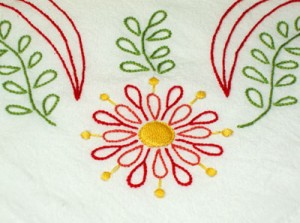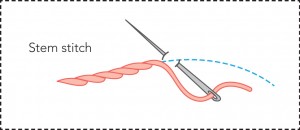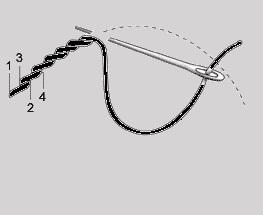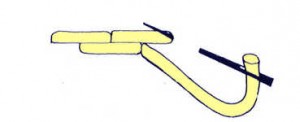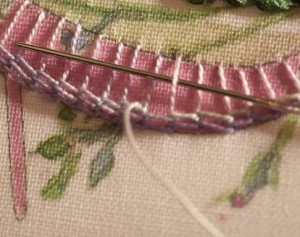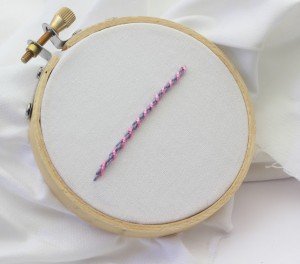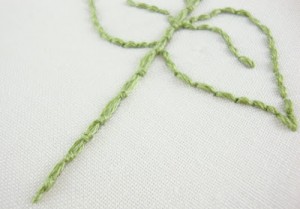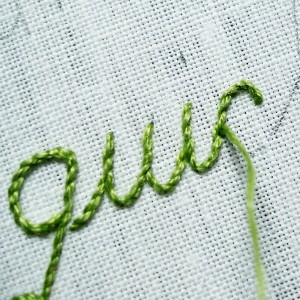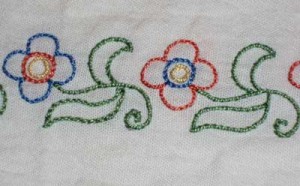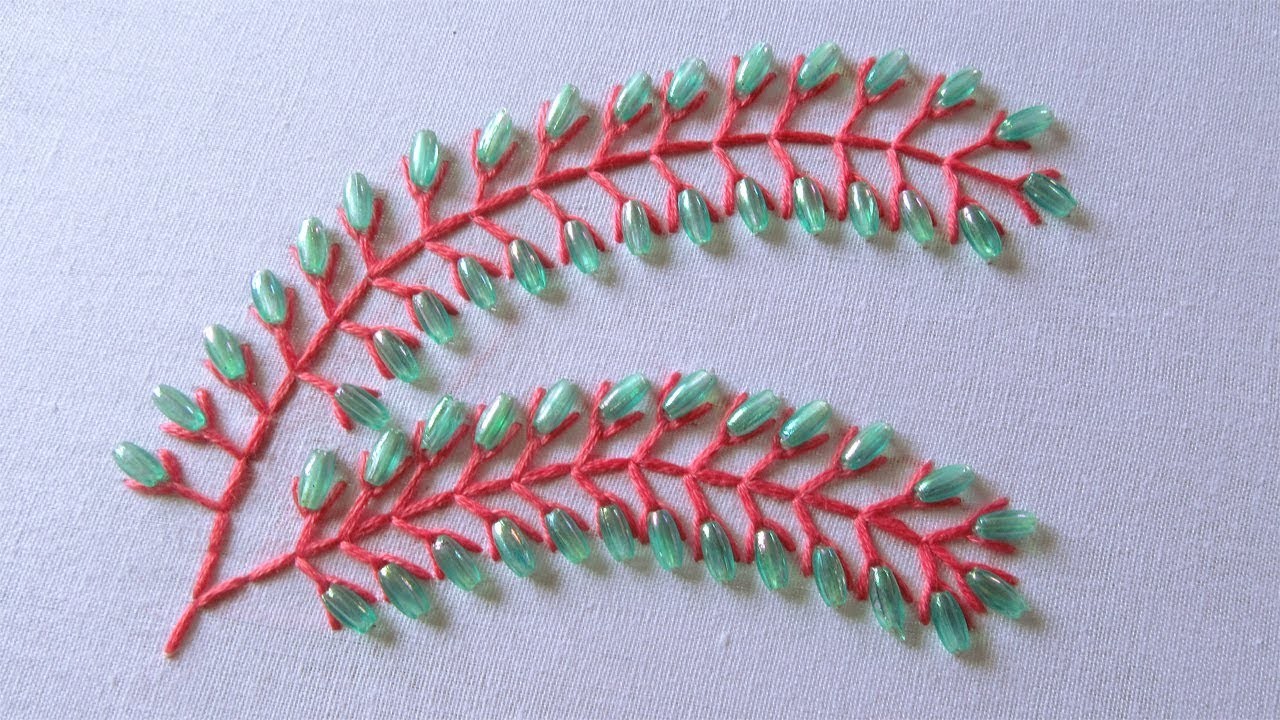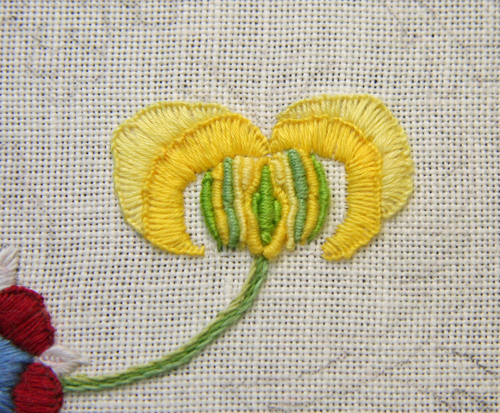Stem Stitch
Table of Contents
The stem stitch, also known as the crewel stitch, boasts of a beautiful rope-like textured appearance that suits outlining an embroidery design or creating beautiful patterns. It is ideal for defining stems of plants, stalks of flowers, etc. It can be sewed on both straight and curved lines.
Stem Stitch Instructions
The simple tutorial acts as an excellent guide for beginners in embroidery.
Step 1: Working from left to right, bring the needle up at point 1 (see picture below) and down at point 2.
Step 2: Keeping the thread beneath the needle, bring the needle up through point 3 that is nearly midway between 1 and 2. The said point should be located a little higher than the level of the first stitch.
Step 3: Pull up the thread fully and repeat steps 1 and 2 for the entire length that you wish to cover.
To keep the stitch neat and nice, ensure your stitches are small. This should especially be kept in mind while working around curves and turning corners as it gives a tight finishing. On the wrong side of the fabric, the stitch resembles back stitch.
Stem Stitch Video Tutorial
Variations
In the alternating or double stem stitch, two rows are worked simultaneously with one row offset by half the length of a stitch in the other row.
The raised stem stitch band, typically used in hand embroidery, is nothing but stem stitch done over foundation stitches to get a padding effect.
The whipped stem stitch involves winding a thread of a different color over a basic stem stitch foundation.
When the stem stitches are done in an extremely slanting manner such that they highly overlap each other, then it is known as the encroaching stem stitch. The Japanese stitch is another member of the family that looks like the satin stitch, while the knotted and Portuguese stem stitches are other popular variations.
Uses
Apart from intricate embroidery designs, you can consider the stitch for adding neat alphabets in your pattern. Make your appliqués look interesting with this stitch. You can seamlessly use it for smocking too.
Roses and circles in stem stitch enhance the look of your hand embroidery designs.
You can use variegated color threads for a fantastic juxtaposition of hues. Here is hoping that the step by step offered you a great learning experience. Your next needlework is set to dazzle with the enamoring stitch.
Related Articles
Join Our Mailing List
Sign up to get the latest updates, along with fresh patterns and tutorials, right to your inbox

